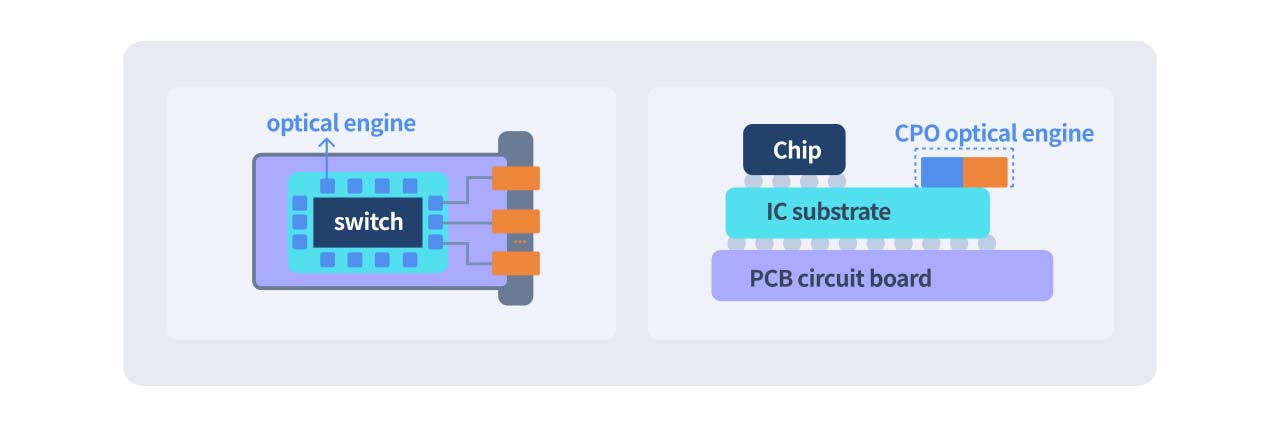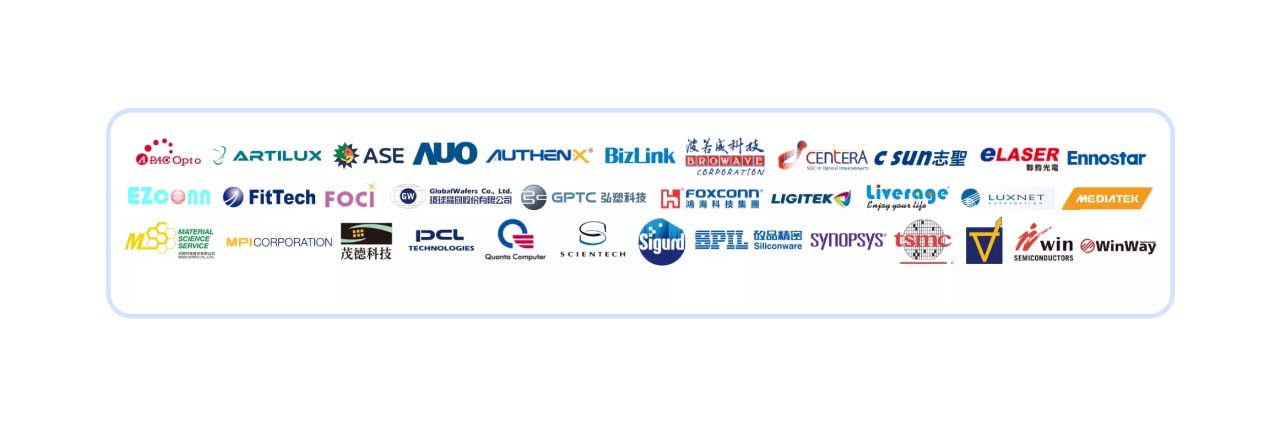What is driving Nvidia, TSMC, and Intel to invest heavily? What’s being hailed as the next-generation technology to elevate AI and data transmission? It’s —— Silicon Photonics, a hot topic globally now. As silicon photonics technology matures, its applications promise to benefit ultra-high-speed networks, AI computing, and even quantum computers. In Taiwan's stock market, this field has become a popular theme. Below, we will provide a brief overview of silicon photonics and the recently established Silicon Photonics Alliance!
What is Silicon Photonics?
Silicon Photonics is a technology that uses light as a medium, utilizing light-conductive materials within chips as circuits called "waveguides." This technology merges optical components with circuitry, using optical signals instead of electrical signals for data transmission, achieving higher bandwidth and efficiency. Silicon photonics is an emerging, rapidly developing field, and its potential lies in combining optical conduction with semiconductor manufacturing processes to develop faster, low power-consuming chips.
Due to the transparency and non-interference properties of glass (SiO2) with light, it’s the material of choice for light transmission. This has brought silicon wafers combined with optical systems—"silicon photonics"—into the spotlight recently.
Isn’t Optical Conduction Already Used?
Optical fibers, already well-established, share some technical similarities with silicon photonics applications in the semiconductor field.
| Application | Difference |
|---|---|
| Optical Fiber | Optical fiber technology primarily uses electro-optical conversion modules to convert electrical signals into optical signals, allowing long-distance transmission through glass or plastic fibers, significantly boosting performance. |
| Silicon Photonics | In semiconductor applications, silicon photonics also aims to use optical conduction to enhance performance and reduce power consumption. It shows promise for addressing heat issues in high-performance computing, but here, signal transmission occurs only within or between chips. |
Applications of Silicon Photonics
Co-Packaged Optics (CPO)
The integration of optics and semiconductors is what’s known as Co-Packaged Optics (CPO), where optical components are embedded within an electronic chip. Through silicon-based optical transceivers, CPO converts electrical signals into optical signals for high-speed transmission within optical fibers. Besides performance gains and signal loss reduction, CPO’s integration of optical and electronic components within a single package greatly enhances system density, reducing power consumption and costs.

In addition to CPO, silicon photonics is expected to impact other sectors. While still in early development across many fields, the future applications are promising. Below are some sectors that are highly discussed for silicon photonics.
IT and Telecommunications
Silicon photonics, with its high speed and low power, is poised to play an essential role in the IT industry. For example, it can replace traditional transmission methods for greater efficiency and enable high-speed optical interconnects between on-chip, chip-to-chip, and board-level connections, supporting dynamically reconfigurable network architectures and significantly boosting resource bandwidth utilization. Silicon photonics may also be integrated into edge processors for technologies like 5G, enhancing edge computing efficiency and reducing required space due to its high density.
Data Centers
Silicon photonics enables high-speed optical interconnects within data centers, such as connections between servers and racks, allowing servers to implement high-speed data transmission to meet growing data bandwidth demands.
Sensors & AR/VR
Silicon photonics can support LiDAR systems for developing high-precision 3D environment sensing devices. By improving data transmission efficiency within vehicles, it has the potential to enhance driver-assistance systems and facilitate data transfer between vehicles and infrastructure.
In the AR/VR field, silicon photonics can aid motion recognition, speed up image recognition, and enhance processing capabilities.
Biotech and Medical
Silicon photonics can be used in biosensors for optical diagnostics and imaging, improving diagnostic accuracy and efficiency. Its compact nature also makes it ideal for applications in implantable medical devices.
Silicon Photonics Alliance
Silicon Photonics Stocks
With few companies in Taiwan specializing in silicon photonics, the Silicon Photonics Alliance was formed at the September 3 Semicon Conference, spearheaded by TSMC and ASE. Joined by 30 other companies across optical communication and packaging industries, the alliance aims to integrate resources from materials science, optics, electronics, and packaging to establish Taiwan’s leadership in silicon photonics development and strengthen the position in global semiconductor.

For people who are interested in AI related industry, you can also refer to the following articles.
Taiwan Industry 101: Introduction to CoWoS Technology
